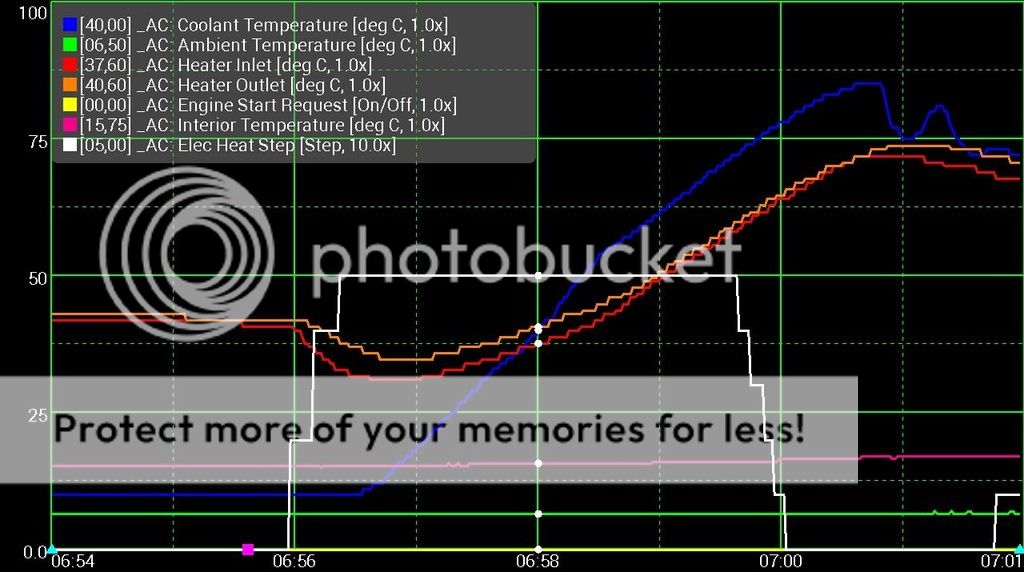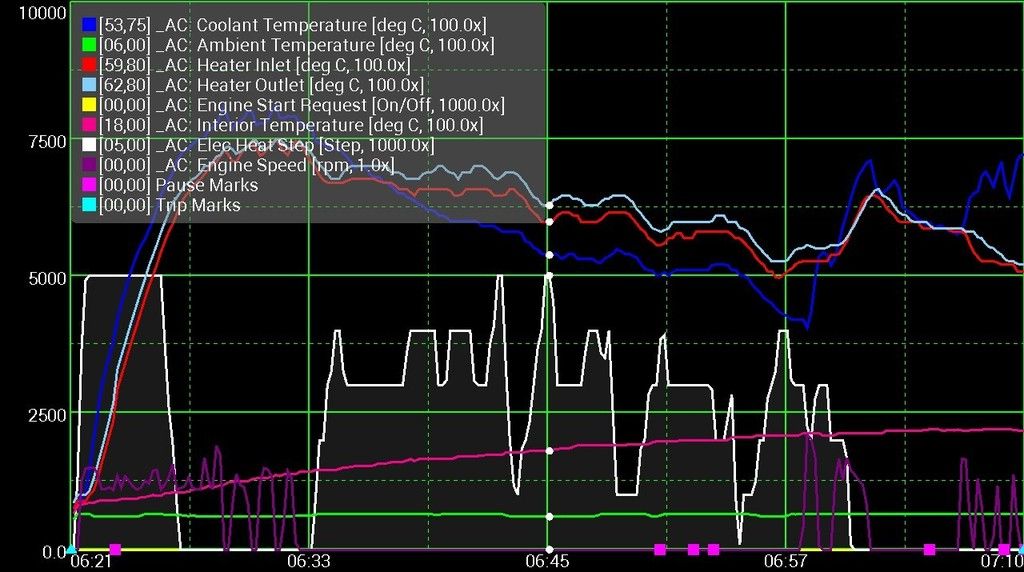vtechtuning
Well-known member
As you know some of my ideas/developments from "Let's go pure EV" thread, I promised to focus on gasoline engine heating function control.
I'm still not sure about exact algorythm of ICE start (and I cannot read AC-control ecu to check the algo just in code), I decided to check it step by step and look for a non-intrusive method of influence to it. I have some success (video in 2 hours, when it will be colder - now it is +4 and +7 in the car and I'm not sure, if it is cold enough to proove that partial success).
What I have now:
- gasoline engine is controlled not only by difference of temperatures (set and real) inside, nor ambient to internal difference. Algorythm is more sophisticated for sure (depends on actual load, delta of actual load (especially kick-down impulse prohibits gasoline engine to be used/started as heater - sounds ridiculous, because kick-down forces ICE start and driving with gasoline engine is a source of heat - but I have already found, that it is managed and handled totally separately). It depends on ambient to internal-set temperature, internal-set to internal-actual temperature and actual level of electric heating. I have no signs from my tests that it is dependent on battery temperature, or SOC.
- I have added such functionality to the PHEV box (pure EV mode box - for those who did not read "Let's go pure EV" thread) that box can simulate ultra short kick-down behaviour, that is not considered at all by PHEV ECU as kick down (as this function has a time delay and integration of signal hard coded) but PHEV ECU puts appropiate information to CAN (once) and this prohibits (or better to say - reduces importancy of gasoline engine start demand. Luckily such trigger has it's own delay in AC-control ecu (so for few seconds gasoline engine start by demand of heating is blocked or exactly - has lower priority).
Finally we can highly reduce gasoline engine start-for-heating reason and importancy and even started - it stops much faster. This is proven.
Box must have one additional line with reference temperature signal (internal temp signal) to know (estimate) what is actual probable demand due to internal temperature. To calculate total demand I need 2 more temperatures for sure, but signals are not available (at least - not easy available, without car alteration). I need to produce one plug for that, but hardware in the box is ready now. For tests I have soldered one signal line to temp sensor, so box knows internal temperature, and installed additional chinese thermometer with out and in temperatures, just for me, to monitor temps.
What do you think? Any more info about AC-ECU algo for heating?
https://youtu.be/xpp6i_ebVnM
I did two starts - first with box on, second - off. +4,5 C outside, similar cold inside (I first declared to do one test and second one after 1 hour, but I thought that during second start it is even warmer inside & gasoline engine is warmer - so for sure it should work shorter or max same time than in first try.
Observations:
- engine starts in both cases.
- with box on engine works 30 seconds, then stop
- then restarted (car off, car on) with box off - engine works for more than 3 minutes 15 seconds (then I switched it off manually as I want to cool down the car again and re-test).
I still do not understand fully why it starts it (for sure these complicated dependencies cause that, for instance outside temperature) but I have reduced it's working time more than 6 times in the first try (in both cases electric heating works same, 100% of heating power).
I'm still not sure about exact algorythm of ICE start (and I cannot read AC-control ecu to check the algo just in code), I decided to check it step by step and look for a non-intrusive method of influence to it. I have some success (video in 2 hours, when it will be colder - now it is +4 and +7 in the car and I'm not sure, if it is cold enough to proove that partial success).
What I have now:
- gasoline engine is controlled not only by difference of temperatures (set and real) inside, nor ambient to internal difference. Algorythm is more sophisticated for sure (depends on actual load, delta of actual load (especially kick-down impulse prohibits gasoline engine to be used/started as heater - sounds ridiculous, because kick-down forces ICE start and driving with gasoline engine is a source of heat - but I have already found, that it is managed and handled totally separately). It depends on ambient to internal-set temperature, internal-set to internal-actual temperature and actual level of electric heating. I have no signs from my tests that it is dependent on battery temperature, or SOC.
- I have added such functionality to the PHEV box (pure EV mode box - for those who did not read "Let's go pure EV" thread) that box can simulate ultra short kick-down behaviour, that is not considered at all by PHEV ECU as kick down (as this function has a time delay and integration of signal hard coded) but PHEV ECU puts appropiate information to CAN (once) and this prohibits (or better to say - reduces importancy of gasoline engine start demand. Luckily such trigger has it's own delay in AC-control ecu (so for few seconds gasoline engine start by demand of heating is blocked or exactly - has lower priority).
Finally we can highly reduce gasoline engine start-for-heating reason and importancy and even started - it stops much faster. This is proven.
Box must have one additional line with reference temperature signal (internal temp signal) to know (estimate) what is actual probable demand due to internal temperature. To calculate total demand I need 2 more temperatures for sure, but signals are not available (at least - not easy available, without car alteration). I need to produce one plug for that, but hardware in the box is ready now. For tests I have soldered one signal line to temp sensor, so box knows internal temperature, and installed additional chinese thermometer with out and in temperatures, just for me, to monitor temps.
What do you think? Any more info about AC-ECU algo for heating?
https://youtu.be/xpp6i_ebVnM
I did two starts - first with box on, second - off. +4,5 C outside, similar cold inside (I first declared to do one test and second one after 1 hour, but I thought that during second start it is even warmer inside & gasoline engine is warmer - so for sure it should work shorter or max same time than in first try.
Observations:
- engine starts in both cases.
- with box on engine works 30 seconds, then stop
- then restarted (car off, car on) with box off - engine works for more than 3 minutes 15 seconds (then I switched it off manually as I want to cool down the car again and re-test).
I still do not understand fully why it starts it (for sure these complicated dependencies cause that, for instance outside temperature) but I have reduced it's working time more than 6 times in the first try (in both cases electric heating works same, 100% of heating power).




































